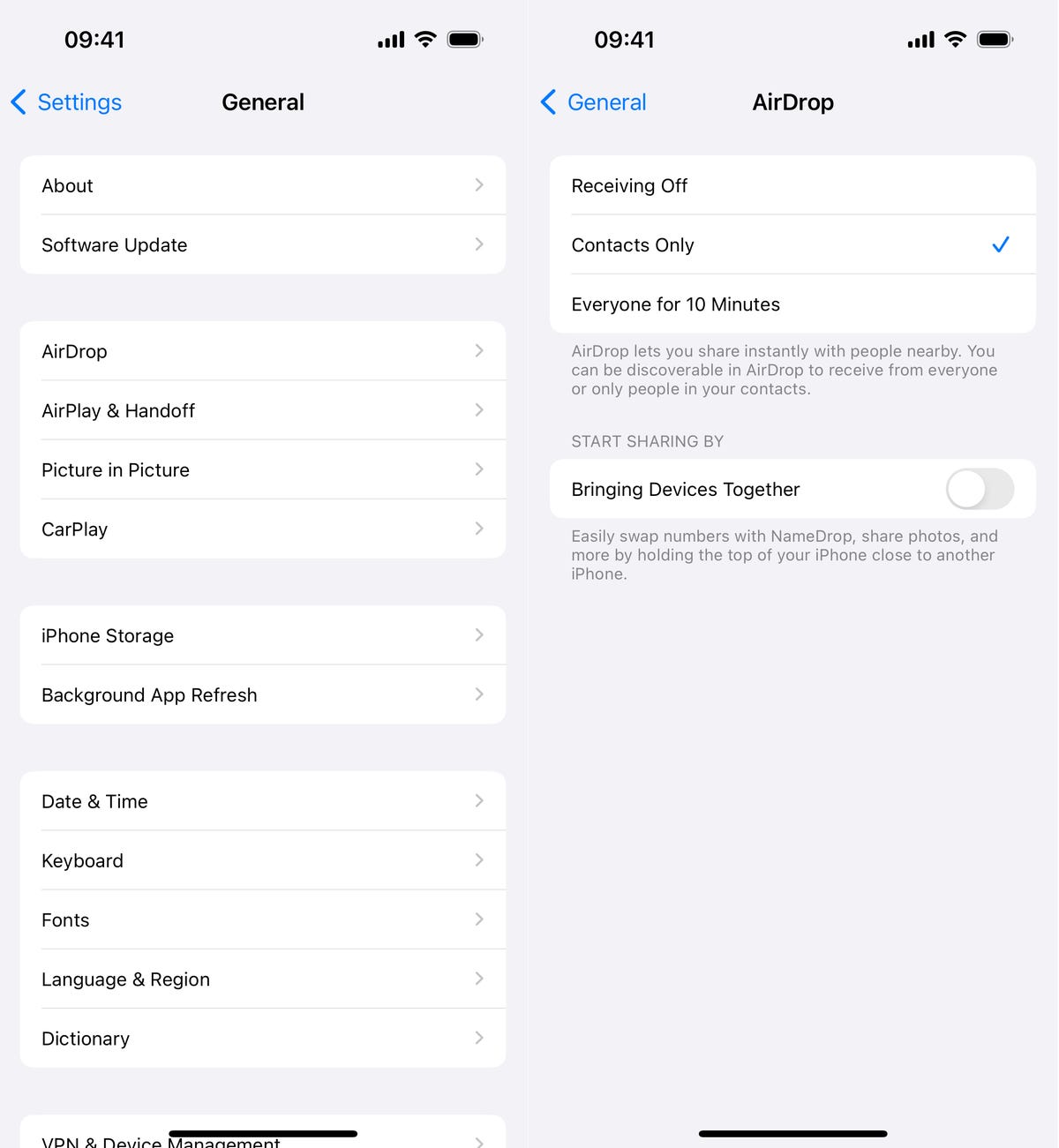Apple’s iOS 17 software update is now out and available to the general public for download. The latest iPhone OS has several new features, including full-screen contact posters during phone calls, an improved and more personalized autocorrect, swipe to reply in text messages, interactive widgets, and so much more.
Don’t miss: iOS 17 Cheat Sheet: Everything to Know About the New iPhone Update
While most of these features are welcome, if you’re like me, you may not LOVE every single new offering from iOS 17. Sometimes I don’t want change, especially when it’s drastic, because I get used to the way of doing certain things.
I wasn’t a fan of the new search button at the bottom of each home page when I upgraded to iOS 16, because I would accidentally trigger it all the time. It’s not necessarily a bad feature, I just personally didn’t like it.
And with iOS 17, of course there are also a few features that I’m not a huge fan of. If you want to see some of the iOS 17 settings that I find annoying sometimes, keep reading. And best of all, there’s a “fix” for all of them so you can either get rid of them or never have to deal with them again.
While you’re here, check out the iOS 17 settings you need to change ASAP and why you may want to hold off on downloading iOS 17 right away.
Stop NameDrop from automatically sharing your contact info
The new NameDrop feature on iOS 17 allows you to quickly swap contact information via AirDrop simply by bringing your iPhone near another iPhone or Apple Watch. Your name and Contact Poster (also new with iOS 17) are shared with NameDrop, along with your phone number, email address and other information.
However, some people have had issues with NameDrop sharing info when they don’t want to. For example, if you place your iPhone near another iPhone in general, NameDrop may attempt to transfer your contact information. If you carry two iPhones in your bag — one personal and the other for work — NameDrop could attempt to share contact info between the two, which can be annoying when you’re not trying to use the feature on purpose.
Fortunately, there’s an easy way to disable NameDrop completely. In the Settings application, go to General > AirDrop and toggle off Bringing Devices Together. Once the feature is off, you won’t be able to swap numbers and information via NameDrop.
Hide notifications in StandBy
The StandBy feature is arguably one of the biggest new iOS 17 features to the iPhone, turning your phone into a smart display when it’s charging horizontally and showcasing information, like the time, your calendar, photos and notifications, in large blocks that are easy to see. StandBy is a great way to quickly absorb information by glancing at your phone, but if there are people around and you want to keep some of your information private, you may not want StandBy to show notifications.
In Settings > StandBy, toggle off Show Notifications. Now when you’re in StandBy mode, you won’t see all of your notifications displayed. Critical notifications, like weather emergencies, will still be shown in StandBy mode.
Alternatively, you can hide notification previews instead of the entire notification. That way, you can still see what notifications you’re getting, you just can’t check out exact details unless you tap on the notification. For this to work, you’ll need to enable Show Notifications, as well as the Show Preview on Top Only setting underneath.
Stop Siri from activating so easily
Siri received a few major changes in iOS 17, including the ability to activate the voice assistant by only saying “Siri” — no more “hey” needed. It’s an easier way to quickly open an application or run a shortcut with just your voice, but at the same time, you might accidentally trigger Siri more often, since the new trigger is just a single word now.
If you want to go back to only having Siri activated when you say “Hey Siri” and not just “Siri,” go into Settings > Siri & Search > Listen for and choose the solo “Hey Siri” option. Your iPhone will no longer activate Siri simply when you say “Siri.”
For more on iOS 17, learn how to automatically delete multifactor authentication messages in texts and email and how to create Live Stickers.
Apple’s iOS 17 software update is now available for download to the general public. This latest update brings several new features to the iPhone, including full-screen contact posters during phone calls, an improved autocorrect system, swipe to reply in text messages, interactive widgets, and more.
While most of these features are welcome, there may be some that you don’t love. Change, especially drastic change, can sometimes be difficult to adjust to when you’re used to doing things a certain way. Personally, I wasn’t a fan of the new search button on each home page when I upgraded to iOS 16 because I would accidentally trigger it frequently. It’s not a bad feature, but it just wasn’t for me.
With iOS 17, there are also a few features that I’m not a huge fan of. If you want to know which settings I find annoying and how to fix them, keep reading. There are solutions available that will allow you to either disable these features or avoid dealing with them altogether.
While you’re here, don’t forget to check out the iOS 17 settings that you need to change as soon as possible. Additionally, consider holding off on downloading iOS 17 right away.
One of the features in iOS 17 that you may want to disable is NameDrop. This feature allows you to quickly share contact information via AirDrop by bringing your iPhone near another iPhone or Apple Watch. However, some people have had issues with NameDrop sharing information unintentionally. To disable NameDrop, go to Settings > General > AirDrop and toggle off “Bringing Devices Together.” This will prevent contact information from being shared via NameDrop.
Another feature you may want to customize is StandBy. StandBy turns your iPhone into a smart display when it’s charging horizontally, showing information such as the time, calendar, photos, and notifications in large blocks. If you want to hide notifications in StandBy mode, go to Settings > StandBy and toggle off “Show Notifications.” Alternatively, you can hide notification previews by enabling “Show Notifications” and selecting the “Show Preview on Top Only” setting. This way, you can still see what notifications you’re receiving without revealing exact details unless you tap on them.
In iOS 17, Siri has also undergone changes. You can now activate Siri by saying “Siri” instead of “Hey Siri.” While this makes it easier to use, it may lead to more unintentional triggers. If you prefer the previous activation method, go to Settings > Siri & Search > Listen for and choose the “Hey Siri” option. This will ensure that Siri is only activated when you say “Hey Siri.” Alternatively, you can disable the “Listen for” feature altogether.
For more information on iOS 17, learn how to automatically delete multifactor authentication messages in texts and emails, as well as how to create Live Stickers.





Leave a Reply